Going to the Auction Mart? Have the Right Transportation Documents Ready
BY ANGELA LOVELL
Updated federal livestock transportation regula tions came into effect in 2020, but despite a two-year transition period that was supposed to prepare and educate the industry about the new changes, many Manitoba beef producers remain unclear about the documentation they need to transport their cattle to auction marts or feedlots.
“Many producers still don’t have a clear under standing of what is required for documentation and what format the documentation needs to be in,” says Carson Callum, MBP General Manager.



The main changes to transportation requirements under the Health of Animals Regulations were short ening the maximum length of the transport period for cattle from 48 hours to 36 hours and lengthening the duration of feed, water and rest breaks from five to eight hours. With a lot of the discussion centering around these changes, producers may not have been as focused on the documentation they now need to transport their animals.
“The educational program to inform the producers on the documentation required has been a little slack,” says Rick Wright, Executive Secretary of the Manitoba Livestock Marketing Association (MLMA). “The com
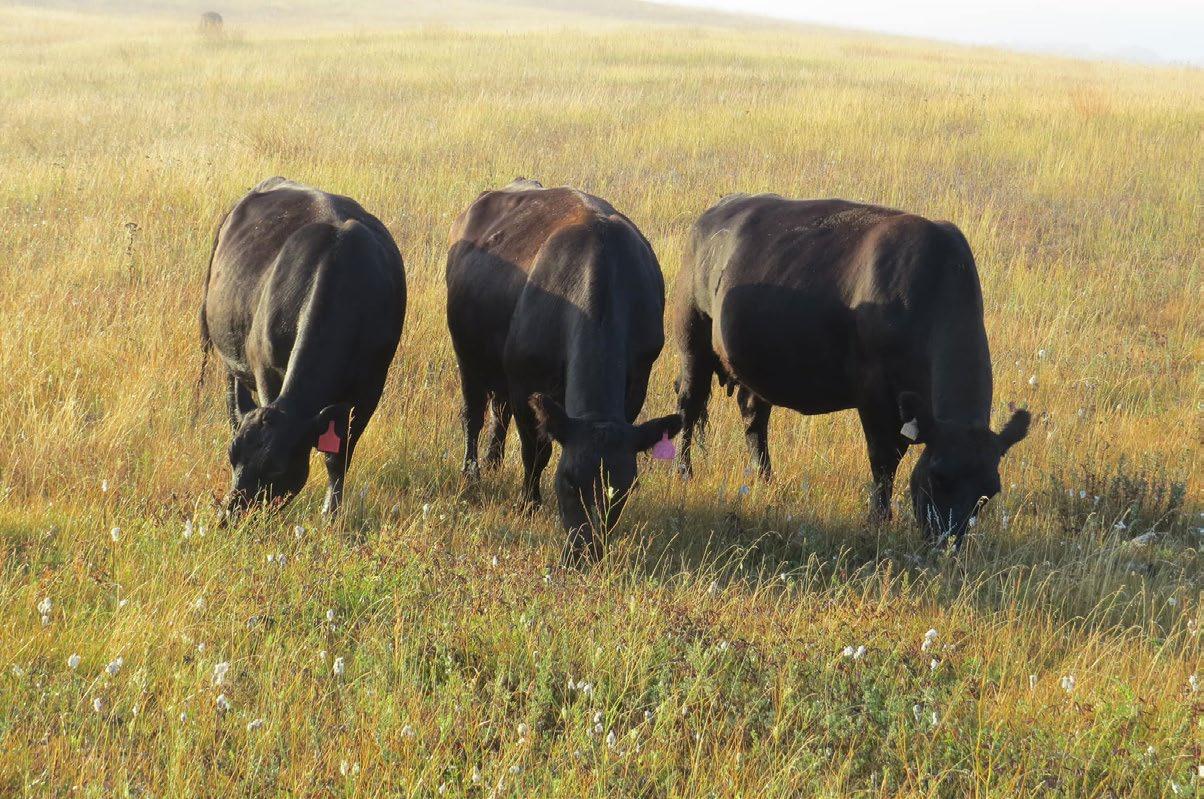
mercial truckers are pretty aware of what they need, but probably 85 per cent of Manitoba producers don’t know that if they are hauling their own cattle, or a neighbour’s cattle, to a place of commerce they need a Transfer of Care (TOC) document.”
How a Transfer of Care document works
The new regulations require that producers who are transporting cattle to any destination where a change of ownership takes place, such as an auction mart or abattoir, must fill out a TOC document to be handed to the receiver of the animals, who is responsible for their care from that point on.
12

www.mbbeef.ca PUBLISHED BY MANITOBA BEEF PRODUCERS NOVEMBER 2022 POSTMASTER PLEASE R ET URN UNDELIVERABLE C OPIE S TO MB P, UNI T 220, 530 CENTU RY S TREE T, W I NNIPE G, M B R3H 0Y4 CANADIAN PUBLIC AT IONS MAIL P RODU CT SAL ES AG REEMEN T NUMBE R 40005187 P OS TA GE P AID IN W INNIPE G. General Manager’s Update Page 3 Stockpiled Forage Page 11 Get Set For the Big Game Page
Morning grazing in the Assiniboine Valley near Shellmouth, MB. (Photo credit: Nerbas Bros. Angus)
Page 5
The World is Better With Cattle on the Landscape
After a challenging spring and early summer across most of the province, the relatively dry fall allowed many of us to play catch up after the delayed growing season and to get some late feed production done. Corresponding with the late season scramble are Manitoba Beef Producers’ district meetings, now underway as I write this column. I look forward to catching several of them where I hope we can reconnect after the last two years of mostly virtual meetings. There is no substitute for in-person discussions on topics that matter to all of Manitoba’s beef producers.
Over the last several months, I have spoken with dozens of producers both within Manitoba and across the country and some common themes have emerged. Most agree that the beef business has been difficult with the weather challenges of the last few years, and due to profitability that simply has not kept up with other seg ments of agriculture. Many producers have shared their
TYLER FULTON President’s Column

experiences of dealing with drought, spring storms, or the impact of the hurricane in the Maritimes and forest fires in BC. Quite simply, more beef producers are being exposed to more risks but have not seen a corresponding increase in reward for their efforts.

As a result, we are seeing more herd dispersal sales and an increase in the hay and pasture acres being converted to crop production or other uses. It can be disheartening for those of us who are invested in the industry and know the value that cattle bring to the landscape.
• Cattle utilizing perennial hay and pasture se questers carbon to help combat climate change;
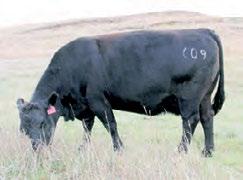
• Cattle and their grasslands provide habitat for wildlife which ensures greater biodiversity;

• Cattle production supports small towns and the rural economy; and
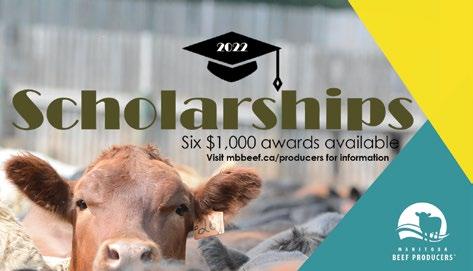
• Cattle utilizing grasslands makes the landscape more resilient to floods and fires.
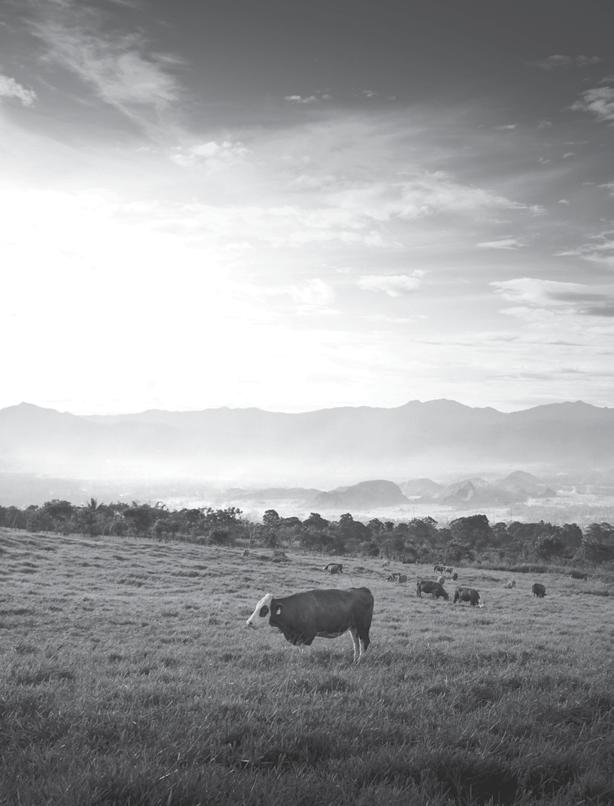
The one thing all of these points have in common is that while there is a societal good that accrues from having cattle on the landscape, these positive outcomes are not impacting our bottom lines. In short, if we lose cattle farmers and ranchers due to unprofitable times, we lose the environmental benefits that come with cattle.
MANITOBA
Through our advo cacy work over the last few months, we have met with staff from both the provincial and federal governments, bankers, reporters, MLAs, MPs and Senators and the general public. Over and over again, we share the same message: The world is better with cattle on the landscape! In particular,
There is a connection to this sustainability message in almost everything on which MBP works. For exam ple, our advocacy efforts that helped lead to the recent Crown land rent reductions announced by the Manitoba government and our ongoing effort for changes to the Crown Lands Act have these positive environmental outcomes by keeping these lands in beef production.
So too, would more equitable treatment of beef pro ducers when compared to crop producers in the context of business risk management programs like Livestock Price Insurance (LPI) and AgriStability. This is another area on which MBP has been extensively working.
The environmental sustainability message resonates among most who hear it, and when it does, it makes more advocates for beef cattle. So please, take the time to tell your farm’s environmental story to friends and family so that everyone understands that the world is better with cattle on the landscape!
204-447-2266
Auctions 204-522-3996


Livestock
204-694-8328
ONTARIO
519-887-6461
Ontario
705-458-4000
613-821-2634
705-439-4444
7, 28;
2 CATTLE COUNTRY November 2022 www.mbbeef.ca DISTRIC T 13 MARY PAZIUK Dauphin, Ethelbert, Gilbert Plains, Grandview, Roblin and Mossey River COMMUNICATIONS AND MARKETING LEAD David Hultin RESEARCH AND EXTENSION SPECIALIST Melissa Atchison D ES IGNE D B Y Print Studio One C AT T L E CO U N TR Y E D I TO R David Hultin LIVESTOCK PREDATION PRE VENTION PROJEC T COORDINATOR Ray Bittner O F FIC E A SS I S TA N T Jennifer Patryluk FINANC E Deb Walger DISTRIC T 14 VACANT Minitonas-Bowsman, Mountain, and Swan Valley West MA NI TOB A BE E F PROD U C E R S Ph: 1-800 772-0458 Un i t 220, 530 Ce n t u r y S t ree t Wi nn ipe g, MB R 3H 0Y 4 PH - (204) 772-4542 FX - (204) 774-3264 info@mbbeef ca www.mbbeef ca Carson Callum GEN E RA L M AN AG E R DISTRIC T 1 ALFRED EPP Boissevain-Morton, Brenda-Waskada, Grassland, Deloraine-Winchester, and Two Borders DISTRIC T 2 NANCY HOWATT Argyle, Cartwright-Roblin, KillarneyTurtle Mountain, Lorne, Louise, Pembina, and Prairie Lakes DISTRIC T 3 ANDRE STEPPLER Cartier, Du erin, Grey, MacDonald, Portage la Prairie, Rhineland, Roland, Stanley, Thompson, Montcalm, Morris, and Ritchot DISTRIC T 4 VACANT De Salaberry, Emerson-Franklin, Hanover, La Broquerie, Piney and Stuartburn, Montcalm, Morris, Ritchot, Spring eld, Ste. Anne, Taché, R.M. of Piney and Reynolds DISTRIC T 5 STEVEN MANNS Cornwallis, Elton, Norfolk-Treherne, North Norfolk, Oakland-Wawanesa, Glenboro-South Cypress, and Victoria DISTRIC T 6 VACANT Pipestone, Riverdale, Sifton, Souris-Glenwood, Wallace-Woodworth, and Whitehead DISTRIC T 7 T YLER FULTON PRESIDENT Ellice-Archie, Hamiota, Prairie-View, Riding Mountain West, Rossburn, Russell-Binscarth, and Yellowhead DISTRIC T 8 MATTHEW ATKINSON 2ND Clanwilliam-Erickson, Glenella-Lansdowne, Harrison-Park, Minto-Odanah, Oakview, North Cypress-Langford, Rosedale, and West Lake-Gladstone DISTRIC T 9 TREVOR SUND Alexander, Brokenhead, East St. Paul, Lac Du Bonnet, Rockwood, Rosser, St. Andrews, St. Clements, St. Francois Xavier, West St. Paul, Whitemouth, Woodlands, LGD of Pinawa, Reynolds, Spring eld, Ste. Anne, and Taché DISTRIC T 10 MIKE DUGUID SECRETARY Armstrong, Bifrost-Riverton, Fisher, and Gimli DISTRIC T 11 ARVID NOTT VEIT Coldwell, Grahamdale, St. Laurent, and West Interlake DISTRIC T 12 MARK GOOD TREASURER Alonsa, Lakeshore, McCreary, and Ste. Rose Maureen Cousins POLI C Y AN A LY S T Keystone livestock specializing in livestock insurance for over 45 years LIVESTOCK INSURANCE Lois McRae & Joyce Gordon RR 1 Box 57 Brandon, Manitoba R7A 5Y1 h: 204-728-3058 c: 204-573-5192 f: 204-727-7744 marmacfarms1@gmail.com SERVICES Preference will be given to those students pursuing a field of study related to agriculture or to those acquiring a skilled trade or pursuing a career that would be beneficial to the rural economy. The completed application, supporting documents, references, required essay or video, etc. must be submitted to MBP by 4:30 p.m. Friday, November 4, 2022.
Market your 2022 Angus tagged calves at these Angus feature sales at participating auction markets. These auction markets are recognized supporters and sellers of cattle identified as Angus through the Canadian Angus RFID indicator. BRITISH COLUMBIA B.C. Livestock Producers Co-Op (Kamloops) 250-573-3939 | Contact for sale dates Okanagon Falls Stockyards 250-497-5416 | Contact for sale dates Vanderhoof Auction Market Ltd. 250-567-4333 | Contact for sale dates VJV Dawson Creek Auction 250-782-3766 | Contact for sale dates Williams Lake Stockyards 250-398-7174 | Oct 12 ALBERTA Balog Auction Services Inc. 403-320-1980 | Oct 25 & 28 Bow Slope Shipping Association 403-362-5521 | Contact for sale dates Calgary Stockyards Ltd. (Strathmore) 403-934-3344 | Oct 1, 29; Nov 12 DLMS DLMS.ca 780-991-3025 | Contact for sale dates Dryland Cattle Trading Corp. (Veteran) 403-575-3772 | Nov 7 Foothills Auctioneers Inc. (Stavely) 403-549-2120 Oct 3, 11, 17, 24; Nov 7 , 14 , 21 , 28 Innisfail Auction Mart 403-227-3166 | Oct 3, 17, 24, 31; Nov 7, 14, 21, 28 Medicine Hat Feeding Company 403-526-2707 | Oct 17, 19, 21, 24, 28, 31; Nov 4, 7 North Central Livestock Exchange Inc. (Clyde) 780-348-5893 Oct 18; Nov 15; Dec 13 (Vermilion) 780-853-5372 Oct 19; Nov 16; Dec 14 Olds Auction Mart 403-556-3655 | Contact for sale dates Perlich Bros. Auction Market Ltd. 403-329-3101 | Oct 12 Provost Livestock Exchange 780-753-2218 | Oct 24; Nov 7 Southern Alberta Livestock Exchange (Fort Macleod) 403-553-3315 Oct 13, 20, 27 Stettler Auction Mart (1990) Ltd. 403-742-2368 | Contact for sale dates TEAM Electronic Sale 403-234-7429 | Sept 30; Oct 28; Nov 11 Thorsby Stockyards Inc. 780-789-3915 | Contact for sale dates Viking Auction Market 780-336-2209 | Oct 4, Nov 1, Dec 6 VJV Auctions | 780-336-2209 Beaverlodge 780-354-2423 | Contact for sale dates Ponoka 403-783-5561 | Oct 19 Rimbey 403-843-2439 | Oct 18 Triple J VJV Auctions Westlock (780) 349-3153 | Oct 20 SASKATCHEWAN Alameda Auction Market 306-489-2221 | Contact for sale dates Assiniboia Livestock Auction 306-642-5358 |ala@assiniboiaauction.com Oct 29; Nov 5, 12, 19 Cowtown Livestock Exchange Inc. (Maple Creek) 306-662-2648 | cowtown.ls@sasktel.net Oct 18, 20, 22, 25, 27, 29; Nov 1, 3 Heartland Livestock Services Moose Jaw 306-692-2385 | plister@hls.ca Oct 13, 25; Nov 8 Swift Current 306-773-3174 | info@hls.ca Oct 13, 15, 22, 29; Nov 5, 12, 19, 26 Yorkton 306-783-9437 info@hls.ca | Oct 19; Nov 2, 23 Kelvington Stock Yards 306-327-8325 | Contact for sale dates Mankota Stockmen’s Weigh Co. 306-478-2229 | mankotastockmens@sasktel.net Oct 14 (Rancher Endorsed Sale), 21, 28; Nov 4 Northern Livestock Sales brent.mlsstockyards@sasktel.net Lloydminster 306-825-8831 | Nov 7, 21 Meadow Lake 306-236-3411 | Oct 26; Nov 9 Prince Albert 306-763-8463 | Oct 10; Nov 7 Saskatoon Livestock Sales Ltd. 306-382-8088 | ptellier@nbine.com | Nov 11 Shaunavon Livestock Sales (88) Ltd 306-297-2457 | Contact for sale dates Spiritwood Stockyards 306-883-2168 ssy@sasktel.net | Oct 19; Nov 2, 16 Weyburn Livestock Exchange 306-842-4574 | wle@weyburnlivestock.com Oct 17, 31; Nov 14 Whitewood Livestock Sales 306-735-2822 | whitewoodlivestock@sasktel.net Oct 11, 25; Nov 8, 15
Interlake Cattlemen’s Co-Op Assn Ltd. (Ashern) 204-768-2360 icca@mymts.net | Oct 26; Nov 9 Gladstone Auction Mart 204-385-2537 auctmart@mts.net | Oct 18, 2022; Mar 7, 2023 Grunthal Livestock Auction 204-434-6519 grunthallivestock@gmail.com| Nov 15 Heartland Livestock Brandon 204-727-1431 info@hls.ca | Oct 18; Nov 8 Virden 204-748-2809 info@hls.ca | Oct 26 Killarney Auction Mart Ltd. 204-523-8477 | killarneyauctionmart@gmail.com Nov 14 Ste. Rose Auction Mart Ltd.
| Nov 10 Taylor
| taylorauctions568@gmail.com Contact for sale dates Winnipeg
Sales
| Oct
Nov 18
Brussels Livestock
| Nov 4
Stockyards Inc. (Cookstown)
| Oct 6 Ottawa Livestock Exchange (Greely)
| Contact for sale dates Kawartha Lakes Community Sale Barn Inc.
| Contact for sale dates Keady Livestock Market (Blue Water) 519-934-2339 | Oct 27 Ontario Livestock Exchange Ltd. (Waterloo) 519-884-2082 Oct 19 QUEBEC Contact the Feeder Calf Sales Agency 450-697-0540 NOVA SCOTIA Atlantic Stockyards Ltd. 902-893-9603 | Oct 4, 18 Feeder Sales www.cdnangus.ca To order Canadian Angus RFID indicators, please order directly from CCIA at www.canadaid.ca or call 1-877-909-2333. Canadian Angus RFID Indicator Program Our breeding program is focused on creating fertile cows that efficiently raise calves, are reliably repeatable, have excellent udders and feet and require minimal replacements (longevity); traits required to be profitable in the cow business. www.ediecreekangus.com MH Mina 609, sired by Shoshone Ferrall 6340 We would like to announce our Fall"Grazing & Genetics Tour" to be held Friday, Nov. 4, 2:00pm. Beautiful wedge shaped cow that raised calves into her teens for usPROOF
A Look at Some of the Topics Being Discussed at MBP’s Fall District Meetings
Greetings all,












Firstly, I want to thank all of you who have joined our district meetings these past few weeks. It has been great to be able to get out and see many members across the province to deliver an update on MBP’s advocacy efforts over the last year.
During our district meetings, we cover many areas of advocacy that MBP conducts and I will touch on a few highlights. This year we reviewed all the efforts we put in to the 2021 AgriRecovery Program for drought relief. This program had its challenges but we know it provided the needed support to producers as a result of the disastrous drought. We also reviewed our efforts related to the spring storms of 2022, where producers unfortunately saw many losses due to excess moisture and snow. This, in part, resulted in funding provided through Disaster Financial Assistance for livestock mortalities.
Another advocacy area covered was an important one conducted by MBP, our provincial cattle association counterparts, and the Canadian Cattle Association. Health Canada had proposed implementing warning labels on food products that are high in saturated fat, sugar, and salt. This proposal originally included ground beef. The industry mobilized through many advocacy avenues to counter this proposal. As a direct result of our joint efforts, Health Canada amended the plan to exempt ground meat from these warning labels, which would have led to unnecessary confusion for consum ers. It was great to cover these advocacy efforts and more during our district meetings.
A reoccurring topic of discussion and concern for MBP and its members is related to the Agricultural Crown Lands Leasing Program. The changes made to the program in 2019 did not align with MBP’s suggested improvements and have had a major negative impact on producers who utilize these lands. MBP is encouraged to see the changes announced in October by the provincial government relative to temporary rent reductions on
CARSON CALLUM General Manager’s Column




























forage leases and the new EngageMB survey to further consult on future changes. We hope as many producers as possible filled out the survey to advance issues like reimplementation of unit transfers, rental rate calcula tions adjustments, enforcement and informed access, to name a few.
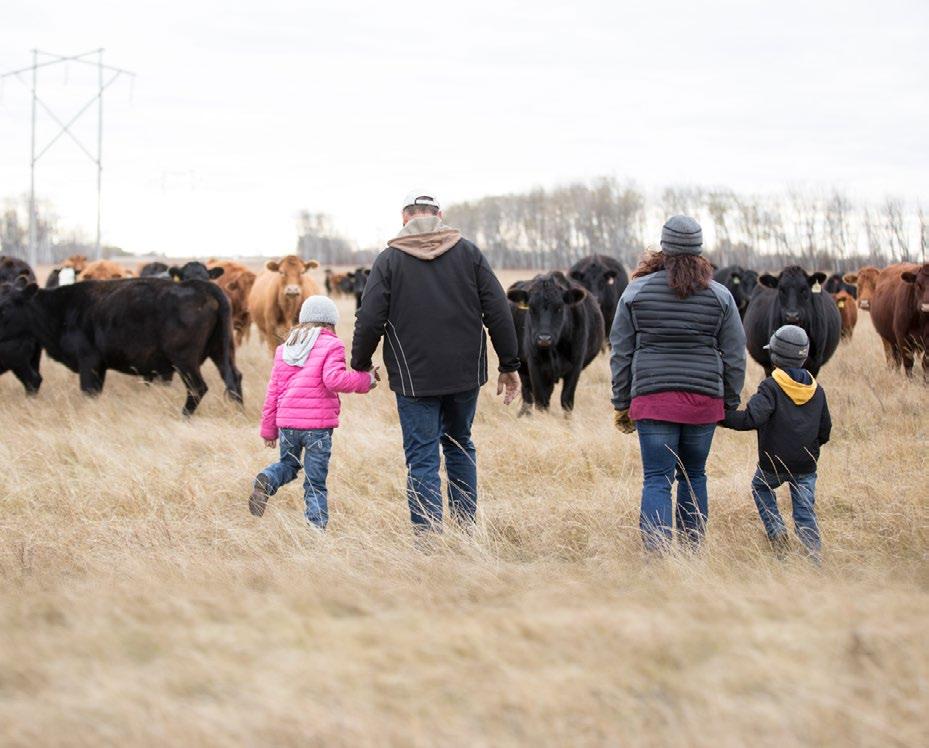

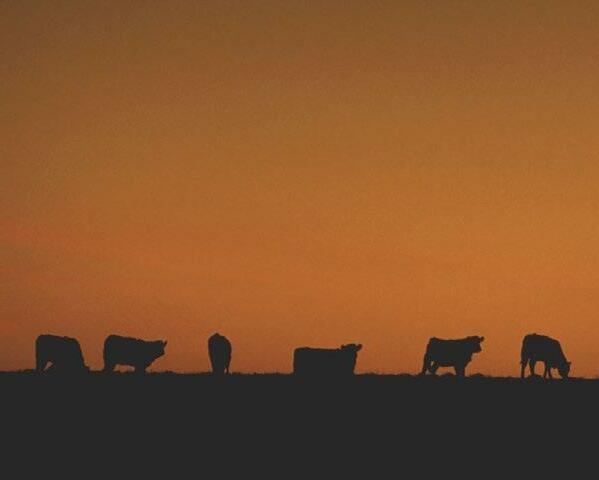

For most of our efforts as an organization in the last few years, there is always a tie to climate change and the environment. This was evident in consultations on the next agricultural policy framework, now entitled the Sustainable Canadian Agriculture Partnership (SCAP). MBP feels strongly that the beef sector has a really im portant role to play in helping to achieve climate resilien cy, and has continually advocated for acknowledgment of the ecosystem goods and services beef producers provide on the landscape. This new partnership needs to provide risk management and programs that are equitable for beef producers to support their operations and all the things they do for the environment.

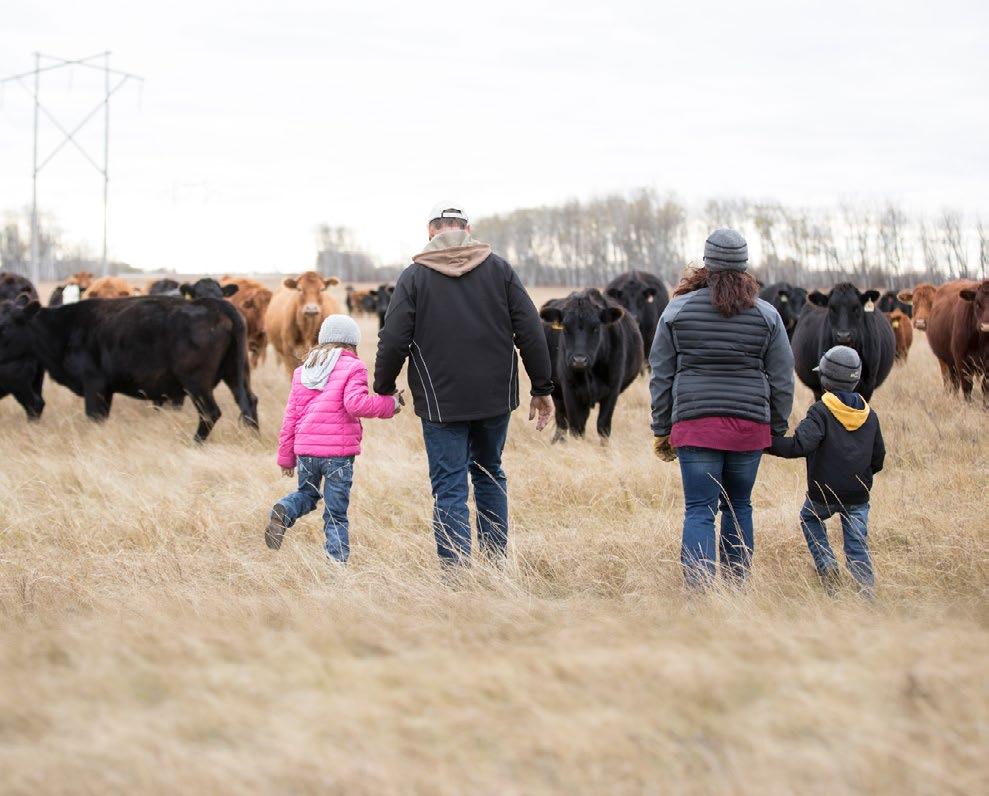

Thanks again for all who attended district meetings over the last few weeks. I hope you can make the time to come our 44th Annual General Meeting taking place February 2-3, 2023. This will be our first in-person AGM since the onset of the pandemic in 2020. The main difference this year will be the AGM will take place in Winnipeg at the Victoria Inn Hotel & Convention Centre. For many years members have been asking for us to try one in Winnipeg to account for those in the east side of the province. We hope many of you can make the trip for interesting speaker sessions, the business com ponent, and fellowship during and after the meeting at the president’s banquet.
Lastly, I want to deliver some wonderful news on the staffing front. In mid-October, Melissa Atchison joined the staff team in the role of Research and Extension Specialist. In order to take on this role, she needed to make the difficult decision to resign as the District 6 director on MBP’s board of directors. Although it is a loss for the board, the long-term benefit for the industry has great potential. Melissa has extensive knowledge in the beef sector provincially and nationally and will be able to help expand MBP’s offerings to producers here in Manitoba through extension services. I greatly look forward to working with her in this capacity.
Cheers, Carson
3CATTLE COUNTRY November 2022
FEBRUARY 2-3, 2023 SAVE THE DATE AGM ANNUAL GENERAL MEETING TH ers to conserve, restore, or enhance wildlife habitat more information callCarolGraham at 4)821 4943or visit www mhhc mbca
Melissa Atchison has joined MBP as a Research and Extension Specialist. (Photo credit: Melissa Atchison)
Committment to the land, water, air, and wildlife is a prerequisite to raising healthy cattle. Sustainability is not a buzzword... it's a way of life. Committment to the land, water, air, and wildlife is a prerequisite to raising healthy cattle. Sustainability is not a buzzword... it's a way of life. Photo credit: Jenna Loveridge Applications for Consideration for the Environmental Stewardship Award Due to MBP by December 9 Please Visit www.mbbeef.ca/our-news/applications-for-consideration-for-the-environmental-stewardship-award-due-to-mbp-by-december-9/
Manitoba Government Expanding Training Agreement with Western College of Veterinary Medicine to Increase Number of Manitoba Students
(Sept. 29, 2022 Province of Manitoba News Release)
The Manitoba government is expanding an inter provincial agreement (IPA) with the Western College of Veterinary Medicine (WCVM) at the University of Saskatchewan to provide increased annual funding for the acceptance of an additional five Manitoba students per year, Advanced Education, Skills and Immigration Minister Jon Reyes and Agriculture Minister Derek Johnson announced.
“By increasing our annual intake to 20 students from 15, we will support more students to pursue this important career path in order to help build our prov ince’s animal health-care capacity for years to come,” said Reyes. “We are committed to working with the col lege’s administration to realize this expansion effective in 2023-24.”
Through a funding contribution from the province every year, Manitoba currently receives 15 guaranteed subsidized seats at the Saskatoon-based WCVM for new entrants annually. The Manitoba government will in crease its funding contribution to WCVM by $539,200 for the 2023-24 academic year to a total of $7,009,600, raising the number of Manitoba intake students to 20 from 15 and to a student quota – the number in the four years of the program – to 65 from 60. For the 2024-25 academic year, Manitoba’s contribution to the college will increase to $7,642,400 and bring the student quota to 70.
Manitoba’s increasing commitment will bring its intake to 20 seats from 15 seats every year until the province supports a total of 80 Manitoba students an nually through the four-year program.
“Our government is committed to increasing the availability of quality veterinary care to all Manitobans, especially for the agricultural sector that is so vital to our provincial economy,” said Johnson. “Animal health enables the success of our province’s agricultural indus
tries, so investing in the training of more veterinarians, particularly those with large-animal expertise, will ensure this valuable support is available when needed.”
There is a great need for veterinarians in large-an imal practice in rural Manitoba to support the agricul ture industry, Johnson added. The additional seats for Manitoba students will be targeted for the support of commercial livestock, such as cattle, bison and pigs as well as sheep and goats, in rural areas to address this critical labour market need.
“The Manitoba Veterinary Medical Association (MVMA) applauds the Manitoba government for their investment in veterinary education,” said Dr. Keri Hudson-Reykdal, president, MVMA. “There is currently a large shortage of veterinarians in Manitoba. The commitment to educating more veterinarians will help alleviate the shortage over the long term. In the shorter term, the MVMA will continue to engage with government, veterinary professionals and other stake holders to address the shortage of veterinary services in Manitoba.”
IPAs are negotiated with post-secondary institu tions to secure seats for Manitoba students in programs that are cost-prohibitive to operate in the province, noted Reyes. Manitoba partners with Saskatchewan and British Columbia in providing funding to WCVM through the Veterinary Medicine IPA, established to en sure guaranteed access to veterinary education leading to doctor of veterinary medicine degrees for Manitoba students.
“We welcome this commitment from our provincial partners that will help to address Western Canada’s ur gent need for more veterinarians,” said Dr. Gillian Muir, dean, WCVM. “The province’s support allows more stu dents from Manitoba to achieve their dreams of a career in veterinary medicine. It is also a sound investment in
protecting the health and wellness of all animals, from companion animals and wildlife to livestock that plays a critical role in Canada’s agriculture industry and the country’s economy.”
“Increasing the number of students who can attend vet school and enter the profession is the logical first step in addressing the veterinary shortage,” said Michelle Streeter, a fourth-year WCVM student who grew up in rural Manitoba. “I am also hopeful that Manitoba’s decision to increase seats draws more students from the Prairies who are interested in working in rural mixed animal practice, since agriculture is such an integral part of so many local communities.”
The increased support for more Manitoba stu dents at WCVM is consistent with Manitoba’s Skills, Talent and Knowledge Strategy to improve alignment between advanced education and training institutions and Manitoba’s labour market needs. Johnson added it also supports Manitoba Agriculture’s commitment to improve resilience and preparedness for animal disease outbreaks.
Note: Manitoba Beef Producers thanks the Manitoba government for funding five more veterinary student training seats at the Western College of Veterinary Medicine. Having stable access to rural veterinary ser vices is critical to the beef sector and this commitment to additional training opportunities recognizes the critical labour shortage in this area. MBP continues to engage with the provincial government and other stakeholders such as the Manitoba Veterinary Medical Association and other agricultural commodities on related topics around the recruitment and retention of veterinarians. MBP also wishes to thank the veterinarians and allied staff who serve our members across the province. Their work is greatly valued.
Province Develops Criteria to Address Shortage of Vets Supporting Rural Commercial Agriculture
 (October 7, 2022 Province of Manitoba News Release)
(October 7, 2022 Province of Manitoba News Release)
The Manitoba government has finalized further details of its new plan to attract, train and retain vet erinarians to support commercial agriculture in rural areas, Agriculture Minister Derek Johnson announced here today.
“Our government has invested in this new strategy to address the critical shortage of veterinarians providing care for commercial livestock and poultry operations in rural Manitoba,” said Johnson. “The agricultural sector is vital to our provincial economy and we are committed to providing support to address the sector’s needs.”
The government has expanded its inter-provincial agreement with the Western College of Veterinary Medicine (WCVM) at the University of Saskatchewan to provide increased annual funding for the acceptance of an additional five Manitoba students beginning in 2023-24, as part of its strategy to build the province’s animal health-care capacity.
Manitoba currently receives 15 guaranteed sub sidized seats at the Saskatoon-based WCVM for new entrants annually. The province will increase its funding contribution to WCVM by $539,200 for the 2023-24 aca demic year to a total of $7,009,600, raising the number of Manitoba intake students to 20 from 15 and to a student quota – the number in the four years of the program – to 65 from 60. The province’s gradually increasing funding commitment will bring its intake to 20 seats from 15 seats every year until it supports 80 Manitoba students annually through the four-year program.
Given the particular need for veterinarians to support commercial livestock and poultry operations in rural Manitoba and for improved biosecurity, the five new intake seats will be targeted for an expansion of veterinary care for the agricultural sector.
Manitoba Agriculture will work closely with WCVM to attract and select students with the rural background, knowledge and passion to become success ful as veterinarians who will return to rural Manitoba to support the livestock and poultry industries.
Along with these attributes, students who are se lected will be expected to have:
• an expressed desire to pursue veterinary practices in commercial agriculture in rural Manitoba;
• a solid academic foundation through achievement in a university-level animal science program; and
• practical knowledge and experience in the livestock or poultry industries, gained through significant experience prior to enrollment.
“Our government will collaborate with stakehold ers and WCVM in upcoming years to ensure the objec tives of this targeted approach are met,” said Johnson. “Manitoba Agriculture will also work with educational institutions, agricultural organizations and other stake holders to ensure information on the new strategy is shared widely.”
More technical criteria for the new intake seats will be developed for 2024-25 and beyond, Johnson added.
“This is an important step toward addressing the shortage of veterinarians in rural Manitoba,” said Tyler Fulton, president, Manitoba Beef Producers. “We appre ciate the focus on recruiting students who have a direct interest and first-hand experience in working with ani mals, and who have been raised in a rural environment. We thank the provincial government for its investment in training more vets.”
In addition, Manitoba Agriculture is exploring options to work collaboratively with the industry to fur ther support these efforts to address its labour market needs, Johnson said.
Manitoba Agriculture Computer Skills Workshop
Manitoba Agriculture staff will lead free workshops on how to search and find the information you need on the Manitoba Agriculture website. Learn how to:
• find financial assistance information
• fill out online applications
• save, attach and email online applications
• navigate through the site in general
Workshops will be held across the province during the month of November.
Spaces are limited. To sign up or for more information, please call 1-844-769-6224, or email agriculture@gov.mb.ca
4 CATTLE COUNTRY November 2022 www.mbbeef.ca
Manitoba Agriculture – Transformation Navigating the Manitoba Agriculture Website ad Cattle Country 1/3 page Horizontal block (3.15” wide x 5.8 ”deep)
Manitoba Government Implementing Temporary Rent Reduction on Agricultural Crown Lands, Exploring Further Policy Improvements
(Sept. 28, 2022 Province of Manitoba News Release)
In response to the impacts of extreme moisture over the past two years and stakeholder feedback, the Manitoba government is implementing a temporary rent reduction for forage leases on agricultural Crown lands, Agriculture Minister Derek Johnson announced.
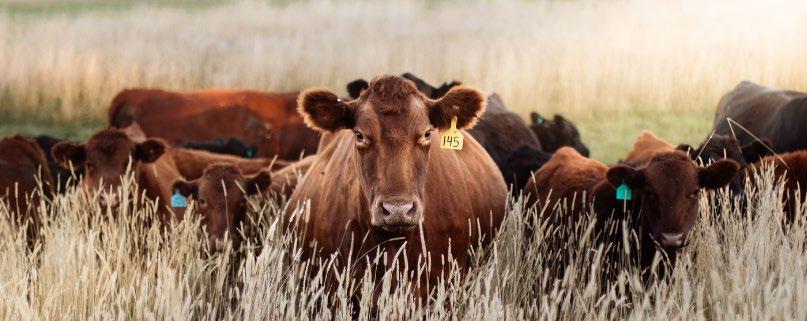
“The Agricultural Crown Lands Program supports a vibrant and sustainable agricultural sector, and our government is committed to ensuring it continues to meet the needs of Manitoba’s livestock industry,” said Johnson. “Stakeholders have told us that rental rates on forage lands are challenging with the hardships they are experiencing following the past two years of extreme weather conditions. We are responding to their concerns by implementing this rent reduction program over the next three years, which will provide ranchers with up to $4 million in relief.”
The forage lease rent reduction will be in place for the next three years with a 50 per cent reduction in 2023, a 33 per cent reduction in 2024 and a 15 per cent reduc tion in 2025. Forage leaseholders do not need to apply for the support, Johnson noted, adding the reduction will be automatically applied to next year’s bills.
Adverse conditions ranging from severe drought
the past two years to excess moisture this year have significantly affected the productivity and forage capacity of agricultural Crown lands. This temporary rent reduction will be in place as the productivity of the land recovers and as further improvements to the Agricultural Crown Lands Program are implemented, the minister noted
In addition to the rent reduction program, Manitoba Agriculture is exploring other policy, program, regulation and service improvements to enhance the productivity and sustainability of agricultural Crown forage lands including mechanisms for leaseholders to invest in productivity and adjustments to the terms and conditions of leases.
Page 1 Check to see if you need a Transfer of Care document
The TOC document must provide specific infor mation such as the date and time the animal arrived at the receiving facility, the condition of the animals on arrival and the last time the animals were fed, watered and rested.
Livestock being hauled directly to a certified feed lot do not require a TOC document but do require an Animal Transport Record (ATR).
There is no required format for the TOC infor mation; it can be hand written, emailed or texted. The information just needs to be readable, contain the required information, and be easily found if a Canadian Food Inspection Agency (CFIA) inspector requests to see it.
When a producer (or commercial transport compa ny) fills out the TOC, it provides proof of the condition of the animals when they were delivered. Both the shipper and the receiver should keep the TOC on file for at least two years.
“It is the transporter’s responsibility to provide the TOC, so if it’s a commercial trucker, it’s up to them to fill out the form,” Wright says. “The truckers should be asking for that information, filling out the form and dropping it off at the intermediate site when they drop the cattle off.”
Intermediate sites can still accept cattle without a TOC at the moment, but they must record on the re ceiving slip that there was no TOC and they won’t have the information it provides available. If CFIA starts to enforce the regulations, intermediate sites may be reluc tant to accept livestock in the future without the proper paperwork.
No standardized form
Causing further confusion for producers is the fact that commercial transporters also have to provide an additional form called an Animal Transport Record (ART). The industry, from the beginning of discussions about the transport regulation changes, has been push ing for one standardized form, as the current documents
both require very similar information.
“It’s something we continue to bring forward at a federal level to try and reduce the administrative burden and confusion that producers are experiencing in part related to the TOC document,” Callum says.
In the meantime, MBP is encouraging producers to use the form available on the Verified Beef Plus (VBP+) website (see resources sidebar) that producers can print off and fill in with all the correct TOC information.
Even though the transition period officially ended in February of this year, Callum says discussions with CFIA suggest that they are continuing to focus on educating producers about the regulations and docu mentation they need, and Wright also doesn’t see a huge increase in enforcement on the horizon just yet. That said, producers need to make sure they know what is required of them.
Making sure everyone is informed
“We are not expecting to see inspectors at every intermediate site, or more inspectors than we have
done in the past, but moving forward this is going to be part of doing business if you’re transporting livestock,” Wright says. “Livestock Markets Association of Canada is working with CFIA right now to try and get some updated pamphlets and information that we can get out into the hands of the producers to prepare them for the future. We have to do our part to make sure everybody’s informed.”
MBP is also continuing to work with CFIA and the industry to educate producers and encourages produc ers to provide feedback.
“We continue to go into discussions to ensure that these requirements are not overly burdensome for mem bers of the value chain, while ensuring that they meet their purpose of addressing animal welfare concerns,” Callum says. “We encourage producers, if they are expe riencing challenges, to reach out to us so that we know what is happening on the landscape and we can forward that feedback to CFIA.”
Don’t Ship Compromised Cattle
transportation of livestock.
Many in the industry also anticipate that there will be more enforcement in the future to prevent the transport of compromised animals, which causes potential problems along the value chain and is not bene ficial in any way to the livestock industry.
“It’s important that producers understand that we can expect to see an elevated enforcement on the transportation of compromised animals,” says Rick Wright, Executive Secretary of the Manitoba Livestock Marketing Association. “There are very few of them, but when we get animals that are compromised at home and are being offloaded at the markets, we don’t want those animals. Those animals need to be dealt with at home, or sent straight to the abattoir, and that’s something for sure that’s changing in our industry.”
The Canadian Food Inspection Agency (CFIA) has detailed information on its website about how to determine whether an animal is fit for transport and the types of infirmities, illness, injury or conditions that indicate an animal is compromised. These can include lameness, blindness, unhealed procedures like dehorning or castration, and a number of other issues.
Compromised animals should only be transported directly to the nearest place where they can receive care or be humanely killed, and should be isolated during transport. Transporters also need to take measures to care for these animals during transport such as loading last and unloading first, providing additional bedding, water and pain medication of other veterinary care for the illness or injury. Occasionally, an animal may become compromised during transport and should be taken to the nearest location to receive care or be humanely slaughtered. Compromised animals cannot be taken to assembly centres like auction marts or assembly yards.
Resources: CFIA – Make sure animals are fit for the journey https://inspection.canada.ca/animal-health/humane-transport/livestock-and-poultry-transport-in-can ada/eng/1363748532198/1363748620219
5CATTLE COUNTRY November 2022 www.mbbeef.ca
Resources for Transfer of Care documents: VBP+ Transfer of Care printable document http://www.verifiedbeef.ca/blog/2021/ 09/30/transfer-of-care-documents/ Information about TOC documents: https://nationalcattlefeeders.ca/wp-content/up loads/2022/05/4-CFIA-Factsheet-Transfer-of-Care.pdf
The livestock industry has already adopted new federal regulations concerning the transportation of animals that include longer rest periods and shorter maximum haul times, as well as implementing Transfer of Care and other documents to help ensure the humane
(Photo credit: Canva)
Bottom Line: Calf Prices Higher Than Expected, Strong Demand For Feeder Cattle

The fall run is in full swing and as predicted, calf deliveries are somewhat delayed, and that will lead to some congestion at the marketing centers in November. So far this year feeder cattle marketing in Manitoba is down 17% compared to last year.
That is the biggest percentage drop of the four western provinces. Saskatchewan is down 16%, and Alberta is down 5%. There are two major reasons for the decline in numbers. First and foremost was the drought last year in Manitoba. Dry weather conditions pushed cattle to market early, especially in late July and August. This year, we are seeing a complete turnaround in pas ture conditions, with producers leaving their cattle on the grass longer, trying to gain valuable pounds. Recent heavy frosts will quickly change the feed value on the pastures, and moving forward we can expect to see larger volumes of feeder cattle on offer.
Calf prices are higher than expected, considering that grain prices are not coming down as expected. Local demand for corn has prices at over $9.00 per bushel in Manitoba. Barley growers are refusing to sell once the price drops to a certain threshold; with last year’s drought they have lots of storage space and are willing to hold on, while waiting for better pricing. The export market and hog market are both willing buyers, resulting in the grain producers holding the trump card.
According to CanFax, for every dollar per tonne that barley goes up, the price of a 550-pound steer calf should go down nearly three cents per pound. The cost of finishing a steer this year at the current grain price is projected to be around $1.75 per pound.
Background lots are asking for a rate of $1.30 to $1.40 per pound of gain on steers and $1.45 to 1.55 on heifers, based on gains of 2.25 to 2.5 pounds per day. Those rates are about 30% higher than last year. Many
WRIGHT
Bottom Line
of the feed yards that custom background cattle are switching from cost of gain contracts to feed in the bunk plus daily yardage fees. This is a major change in the Manitoba backgrounding industry, switching the risk on the cattle performance from the custom feeder to the owner. The change is being met with some resistance from the investor sector and could negatively affect the calf prices as the investors build in a high risk factor.
Despite the high cost of feed, there is a strong demand for feeder cattle. Cash yearling prices have surpassed the projected contract prices right through to the end of the year. Calf prices in Manitoba are very high, with Ontario paying premium prices for front-end steer calves.
As of October 7, 400 to 500 pound steer calves were 61 cents higher than last year. The 500 to 600 pound steers were 49 cents higher, while 600 to 700 pound steer calves traded 51 cents higher that last fall.
The heifer market, which is always a source of frustration to the cow/calf producer, showed steady increase in pricing from 42 to 49 cents per pound higher than last year. The spread is still wide, and the majority of the heifers sold are going to the feedlots and not as replacement breeding heifers. The spread between the steers and heifers will always remain wide if the major demand is from the feedlot sector. The cost of finishing a heifer compared to a steer is considerably higher.
Another factor to consider is the large number of
complete cowherd dispersals already booked for this fall. Producers wanting to replenish their herds will have lots of reputation bred cows to pick from this fall. If you have a good selection of bred females to pick from, it is harder to keep replacement heifers. My prediction is that the top dispersal cows this fall could reach $2,500, but reduction and run of the mill cows will be a harder sell. Producers have lots of feed, and pastures are going into winter in good shape, but many of the producers are cash poor with the rising costs of farming and are not prepared to borrow at higher inter est rates to increase their herds.
One of the biggest concerns of this fall in the cattle industry is the lack of trucks available to haul cattle. The truth is, there are lots of trucks, just not enough drivers. Long haul truckers are always in short supply, and this year is even worse. Manitoba has an advantage with the pig trucks coming into Brandon from the east or up from Minnesota, plus a regular supply of pig trucks from the west. Back haul rates do not exist anymore, but without the pig trucks, cattle buyers would not have nearly enough trucks to handle the supply of cattle. By the time this goes to print, rates could be north of 18 cents per pound to haul into Ontario and Quebec. Rates from Brandon area to Lethbridge area have increased from 5.50 cents per pound to 8 cents. The Winnipeg and Ashern area are closer to 10 cents. A lot of drivers have gone back to the oil patch and many of the veterans have retired. The new generations of truckers have no experience in livestock hauling and prefer to haul grain, dry goods or “pin to pin” freight. Prices at the markets this fall could be dictated by the availability of trucks. In my all of my 43 years in the livestock market business I have never witnessed a truck shortage this big. Until next time, Rick
Key Steps When It Comes to Reproductive Efficiency
BY DR. TANYA ANDERSON
With the arrival of fall comes the annual fall roundups and pregnancy testing. Pregnancy testing was a little delayed this year due to the later harvest and ample grass on pasture but has now started in earnest to capitalize on the high yearling and cow prices.
Reproductive failure is extremely costly to a cow/ calf operation. Cows must wean a calf every 12 months to maintain economic viability on the operation. Failure to become pregnant or maintain a pregnancy is the top reason for cow culling from a breeding operation.
This year, I am finding that open rates are up sig nificantly - >10% with some as high as 26%. Industry benchmarks are 6% for cows and 8% for heifers with the target of having 60% of your cows bred in the first cycle. In my area, the most common reasons for unexpected reproductive failure are poor cow nutrition (energy, protein and mineral/vitamins), bull issues and disease (namely IBR, BVDV). In some groups, higher open rates are expected due to management changes like a short ened breeding season where later calving cows who have not yet started cycling fail to get bred.
In other areas, typically community pastures or where several herds are commingled or new purchases are routinely made, venereal disease like trichomoniasis and vibriosis are common. Good biosecurity practices greatly reduce the risks for these diseases. Biosecurity is a topic for another day but one quick comment ‒ always obtain a complete reproductive history prior to the purchase of cows/bulls from another operation. Bulls can be tested for trichomoniasis but testing is not as accurate as one would hope; it sometimes takes multiple tests before a positive bull can be identified. Vaccination programs eliminate the viral causes of reproductive fail
ure and loss, such as BVDV and IBR. Do not purchase from herds with no or a poor vaccination program.
Cows need to be at least 3/5 BCS (Body Condition Score) to be reliably cycling and ready for breeding. Remember that the cow is under huge metabolic stress post-calving as she is nursing a calf, recovering from the birth process and needs to be in a positive energy bal ance to maintain her weight and prepare for rebreeding in 45-90 days. Remember that cows in late gestation or lactation will have 20-45% higher energy and 40-80% higher protein requirements than cows in mid-gestation. Don’t short your cows nutritionally during late gestation or they will be in a negative energy balance after calving and future reproductive efficiency will be compromised. Work with a nutritionist and develop a ration based on available feedstuffs and look at all options including alternative feeds. Depending on the year, ergot and mycotoxins may be a risk. Both can cause infertility and increased abortions.
Years ago, it was recommended that mineral sup plementation was less necessary during early pregnancy when fetal needs were lower. This is wrong. Don’t let your mineral run out but instead offer it year round. Also look at the mineral that you are purchasing and ensure that it meets the needs of your herd and your region. Many minerals are too low in copper for most of the “cow areas” of Manitoba where soil molybdenum levels are high and water quality is lower due to high sulphate levels. Mineral interactions can make some minerals unavailable so chelated products may be a better option. In my experience, correcting mineral deficiencies can take years so it is best to prevent the problem in the first place. If possible, incorporate a force-feeding program in the winter ration to ensure that all cows get adequate mineral. Free-choice feeding does result in some cows
becoming deficient due to inadequate consumption. Mixing with salt or offering more palatable lick tubs can improve consumption rates but again, some cows may still have too little intake.
Bull power is important. Semen testing prior to breeding allows assessment of the testes, scrotal size, internal reproductive organs and the penis/prepuce. Semen is assessed for concentration, motility and de fects. Yearly assessment is recommended to detect issues in bulls that otherwise appear normal, such as disease, trauma or frostbite injury. Also, don’t forget to vaccinate your bulls; 4-way viral and Clostridial vaccines are a must as well as pinkeye and foot rot vaccines.
Regularly monitor your bulls during the breeding season especially in single bull breeding pastures. Illness or rapid weight loss reduces a bull’s desire and ability to detect heats, attempt breeding or produce quality semen. Injury to a bull’s legs, feet, back or penis needs to be noted quickly to reduce the impact on the breeding season and allow timely treatment to ensure the bull recovers or can be salvaged. In multi-bull pastures, pay attention to the inter-bull dynamics. An injured boss bull may keep the other bulls away from cows or bulls may be pre-occupied with fighting rather than breeding.
One final note is to touch base with your veterinar ian if you are experiencing reproductive losses above the benchmark standards mentioned above. A review of your management program may shed some light on the situation and feed or mineral testing can be done. It is also important to ensure that you discuss any re productive losses in the form of abortions with your vet. Submission of aborted feti and placentae can yield much diagnostic information about your herd, including dis ease risks, mineral and vitamin adequacy and protein/ energy malnutrition.
6 CATTLE COUNTRY November 2022 www.mbbeef.ca
RICK
The
deanne.wilkinson@gov.mb.ca

Question
and sucking lice, both of which
Beef cattle are affected by two forms of lice,


found in large numbers. Chewing or biting lice, such as Bovicola bovis, have a broader mouth piece and consume debris found on the skin surface. Sucking lice, such as Linognathus vituli and Haematopinus eurysternus, use their narrower and longer mouth piece to take blood meals.
cause
Lice have a direct life cycle, meaning that all life stages take place on the host, the cow. They are only able to survive a few days in the environment and spread primarily through direct contact with infected animals, although contaminated objects, such as bedding, can be a minor source of transmission.
Lice are fairly host-specific, which means that cattle lice usually do not infect oth er species. Lice present themselves in a cyclical pattern, with their numbers increasing in late fall or early winter when the stocking density increases. Their numbers then decrease in the spring, in part due to shedding and higher skin temperatures of the cattle. Carrier animals transport lice during the summer months and are a source of infection in late fall for the remainder of the herd.
Most producers are familiar with the signs of a louse issue, such as scratching, irritation, excessive grooming, and hair loss. As louse numbers increase, animals may
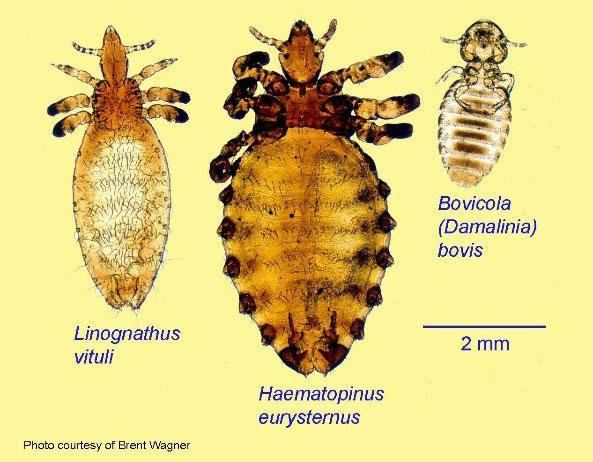
experience decreased weight gain and productivity, as well as reduced insulating abil ity of their coat due to the hair loss. There is also the potential for anemia to develop in severe infestations of sucking lice.
Control of lice is not well achieved through chemical treatments alone, as man agement changes are also integral. The process begins with proper diagnosis through careful inspection of the animal, as itching can have various different causes. Visual detection of lice and their eggs can be conducted by parting the hair and examining the hair around the brisket, cheek, muzzle, eyes, withers, top line and tail head. With a positive diagnosis, producers can begin by applying management changes. It is im portant to cull animals that are chronically, heavily infested with lice, as they are gen erally immunocompromised and can act as reservoirs to reinfect herds. Isolating and inspecting any animals entering the herd will prevent introducing a heavily infested animal to the herd. It is also critical to try decrease stocking density, as crowding can increase their numbers.
Chemical treatments are available in several forms: dusts and sprays, topical and systemic products. The two most commonly used products are macrocyclic lactones, such as ivermectin and moxidectin, and pyrethroid compounds, such as cyfluthrin and permethrin. When using these products, a two-treatment plan may be most efficacious because both types of product are only able to kill adult lice. An example protocol involves treating early winter with a topical macrocyclic lactone, such as ivermectin, followed by a pyrethroid-containing product in mid winter. A newer one-treatment product containing both a permethrin and an insect growth inhibitor is now available and able to provide longer lasting effects due to its ability to kill both adult lice and eggs.
It is necessary to treat all animals in a group and any that are entering the herd. Treatment timing is extremely important, as products need to be applied in late fall or early winter, when lice numbers have increased, but before it is too cold, as most products gel and are poorly absorbed at temperatures below 10 degrees Celsius. It is also recommended to alternate between products in order to prevent resistance from arising. When alternating between products, it is important to use products with different active ingredients and preferably ones from differing insecticide groups. Proper record keeping is necessary to ensure appropriate rotation through products.
If producers are experiencing difficulties controlling these pests even after applying management changes and chemical treatments, consultation with the herd veterinarian is essential. They can assist with diagnosis and development of an indi vidualized plan for the herd, while minimizing the risk of resistance.
Share your Voice
In the next issue of Cattle Country, a Manitoba Agriculture forage or live stock specialist will answer a selected question. Send your questions to Elizabeth. Nernberg@gov.mb.ca.
StockTalk for Cattle Country is brought to you by Manitoba Agriculture. We encourage you to email your questions to our department’s forage and live stock team. We are here to help make your cattle operation successful. Contact us today.

Andrea Bertholet Killarney 204-851-6087
Kristen Bouchard-Teasdale Beausejour 431-337-1688
Shawn Cabak Portage 204-239-3353
Pam Iwanchysko Dauphin 204-648-3965
Cindy Jack Arborg 204-768-0534
Juanita Kopp Beausejour 204-825-4302
Elizabeth Nernberg Roblin 204-247-0087
Andrea.Bertholet@gov.mb.ca
Kristen.BouchardTeasdale@gov.mb.ca
Shawn.Cabak@gov.mb.ca
Pamela.Iwanchysko@gov.mb.ca
Cindy.Jack@gov.mb.ca
Juanita.Kopp@gov.mb.ca
Elizabeth.Nernberg@gov.mb.ca
Contact Jennifer for more
7CATTLE COUNTRY November 2022 www.mbbeef.ca Box 274, Austin, MB R0H 0C0 President: Melissa McRae 204-573-9903 Secretary: Laurelly Beswitherick 204-637-2046 www.mbsimmental.com NOV. 5 Cherry Creek Farms Online Bull & Female Sale - FarmGateTimedAuctions.ca NOV. 15 Come As U R - Rainbow River Simmental Production Sale - DVAuctions Nov. 17 Pembina Triangle Simmental Association 42nd Annual Sale - Cypress River, Manitoba Nov. 20 Maple Lake Stock Farm Annual Bred Heifer Sale - FarmGateTimedAuctions.ca Nov. 30 Associate Invitational Simmental Sale - FarmGateTimedAuctions.ca DEC. 4 Queens of the Heartland Production Sale - McAuley, Manitoba DEC. 5 Northern Light Bred Heifer & 2 Year Old Bull Sale - Virden, Manitoba DEC. 6 Keystone Konnection 43rd Annual Sale - Brandon, Manitoba DEC. 10 Transcon’s Season Wrap Up Sale - Neepawa, Manitoba DEC. 10 Shades Of The Prairies Simmental Sale - Brandon, Manitoba DEC. 11 Bonchuk Farms Female Production Sale - McAuley, Manitoba Fall Sales Manitoba Ag Ex October 26-29 - Brandon, Manitoba MANITOBA’S LARGEST CATTLE SHOW Don’t miss StockTalk Q&A Feature Brought to you
by Manitoba Agriculture
: How can I control lice in my herd this winter? Answer: Controlling lice involves minimizing the lice burden, not completely elimi nating the pest, as is the approach taken with many other parasites in cattle.
chewing
can
severe irritation if
Deanne Wilkinson Extension Veterinarian Manitoba Agriculture
Did you know? MBP distributes a free, weekly ENewsletter to members and partners on timely beef topics. Subscribe Today! mbbeef.ca/news/ Half-page and full-page advertising opportunities also available.
information. 1-800-772-0458
Making Change: Start by Starting
BY SCOTT KEMP
Of course, right? How else do you start?
This expression is used a lot in the fitness industry and the idea is to do something and build momentum from there. This can be applied to other areas of our lives where we want to make changes, including the management of our farms.
I was having a chat with someone recently and they were talking about wanting to improve their manage ment and doing more long-term planning. As we talked through it a bit more, I came to understand that they were feeling overwhelmed and didn’t know where to start. They knew they needed to do some planning but didn’t know where to begin.
This sense of being overwhelmed and not sure how to start is an obstacle for many people when it comes to planning. For producers, a close cousin to this feeling is ‘busy-ness’. There is always something to do on a farm and with time being a limiting resource, choices must be made where to allocate that time. It’s easy to put off things that aren’t, or don’t appear to be, urgent. Planning can fall into that category.

The type of planning I’m referring to is longer-term planning that includes setting and implementing strategy. Capital investment is high in agriculture, and is increasing further, and margins are thin, at best. Of all the risks beef producers face, the risks associated with longer-term business strategy might be the most significant.
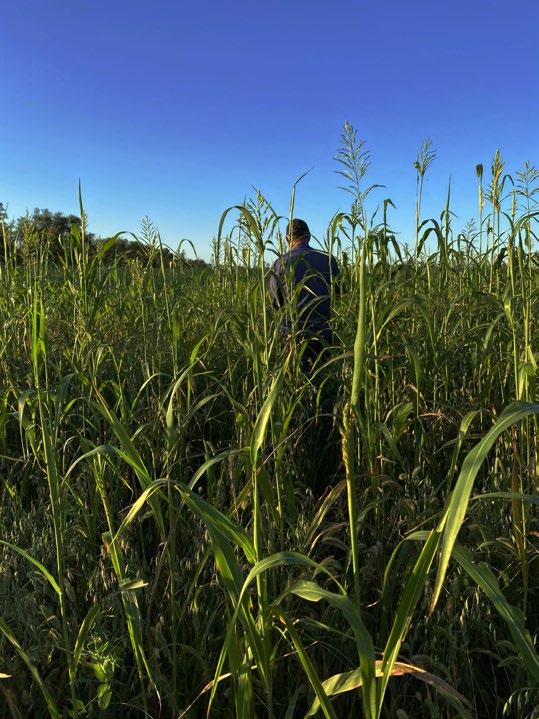


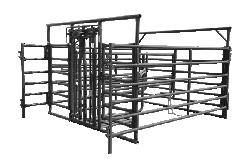
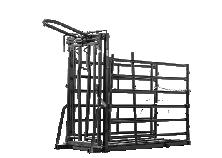
How many of the unoccupied farmyards in rural communities are a result of a business decision (made or NOT made) in the past that really was a function of strategy? A decision not to buy some land at some point? Not to buy or sell some cattle?
I’m sure you have heard the saying about the best time to plant a tree was 30 years ago, and the next best time is today.
If you are looking for ways to get over the hump and begin to take action, try introducing accountability to your management processes. There are three easy ways to start and actually, the easier the better.
• Send an email
• Make a telephone call
• Make an appointment.
The purpose is to engage someone (preferably someone at arm’s length to the farm but it can be a family member) who will hold you accountable to getting things done; in this instance, developing a longer-term plan.
After you have taken this first step, here are some additional things to know:
1. Start with the end in mind . The purpose here is to answer the question of what you are collectively (all people actively involved in the farm) working towards. Planning benefits from getting everyone on the same page. Without a common end goal, people will do what they think is best. This is completely understandable

and not necessarily bad until there are disagreements about what is best for the farm.
2. Write in pencil, not pen. The most common reason I hear from farm families about their inability to plan is their belief that there are too many unknowns that can’t be planned for. That’s exactly why you would plan. With a plan in place, there is a lens to look through when dealing with the unknowns. Farmers sometimes get caught in the thinking that a plan is rigid. Long-term strategy for farms has to be flexible and able to react to events that impact on the business.
3. Don’t let false starts become barriers. There are going to be bumps in the road. If longer-term planning is new to you, understand that there will be a learning curve. Sometimes it is the proverbial ‘one step forward and two steps back’. With practice, that may turn into ‘two steps forward and one step back’. This is a learning process and there will be mistakes or failures along the road. Keep going and don’t let those setbacks derail the whole process.
4. Choose the appropriate level of detail. Another common comment I hear about the inability to plan is
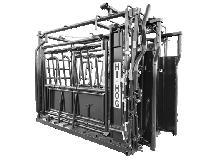
the thinking that plans need to be a textbook. A farm’s strategic or long-term plan ONLY needs to be at the level of detail that the family needs, given where their business is at AND what they are working towards. Generally, a simpler plan will be easier to implement. Start somewhere, get some momentum and greater detail can always be added as required.
5. Commit the time required and set it aside. This one is important, and it’s where the accountability mentioned above can help. Determine early on what the timelines are for the planning discussions, then set the meeting dates aside. Having meetings at a location other than the farm office or kitchen can be very helpful in ensuring that the commitments are kept.
Planning can be hard to initiate, and even harder to maintain. Start by starting and you will already be ahead of where you were yesterday.
Scott Kemp is a Farm and Agribusiness Management Consultant with Backswath Management. He can be reached at scott.kemp@backswath.com
8 CATTLE COUNTRY November 2022 www.mbbeef.ca
Trimming Chutes Calving Enclosures Squeeze Chutes 1-800-661-7002 www.hi-hog.com Call us for your Free Custom Handling System Design Assistance Custom Design Service WE'RE LOOKING FOR DEALERS Seeking people interested in becoming dealers in Manitoba Call Amber at 1 204 264 0609 WE'RE LOOKING FOR DEALERS JOIN THE UNION TEAM Seeking people interested in becoming dealers in Manitoba Call Amber at 1 204 264 0609
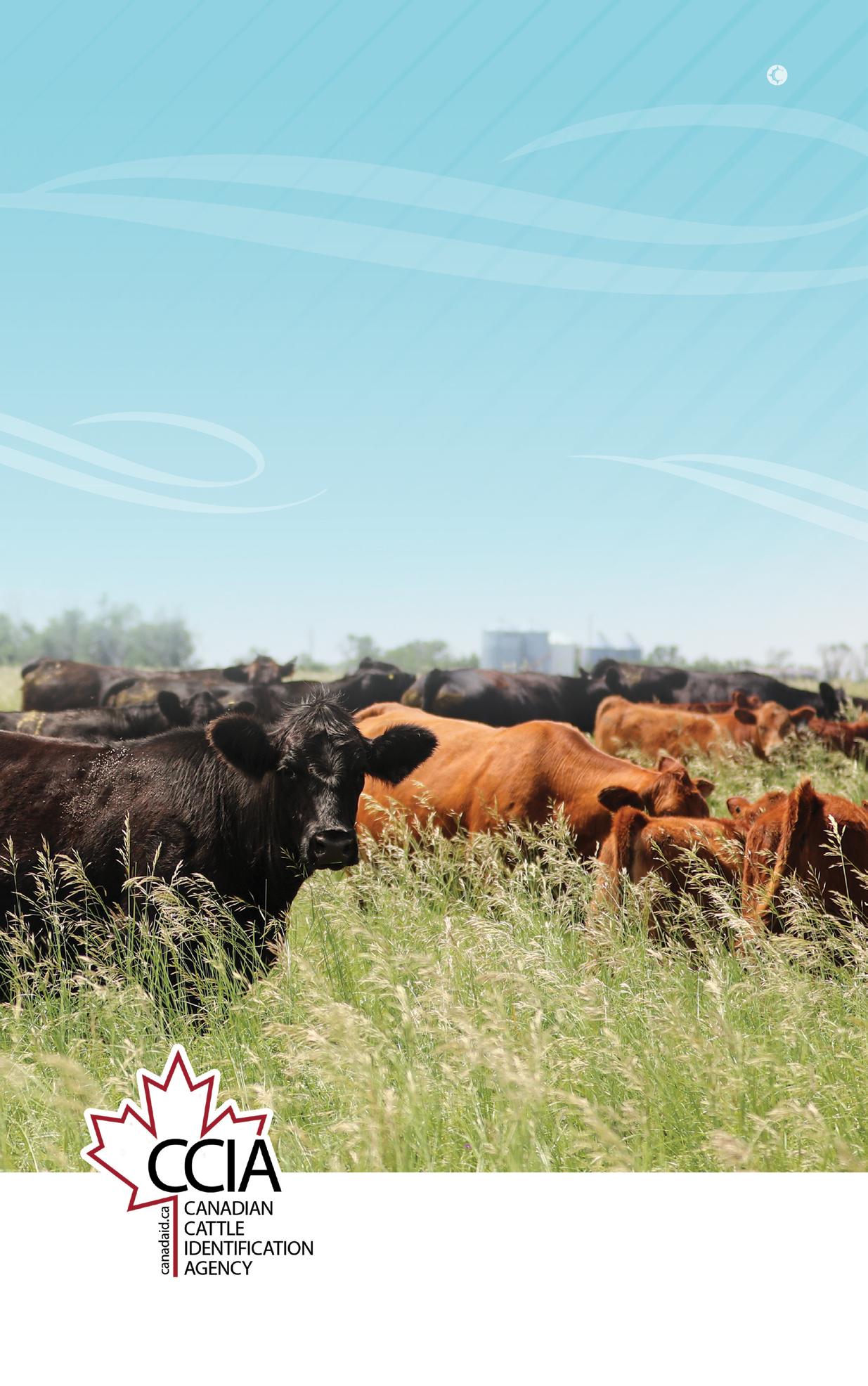
9CATTLE COUNTRY November 2022 BUY ONLINE SIGN UP FOR A WEBSTORE ACCOUNT producers who already shop online + Convenience of shopping from anywhere, anytime + We’re always open and you can shop on any device –mobile responsive + Our shelves are never empty + You can access all approved CCIA tags at competitive prices and have them delivered to your mailbox Sign up today at info@canadaid.ca or call our client support team at 1-877-909-2333 Visit our webstore at tags.canadaid.ca The advantages are obvious 7,000 Join over
Intermediate WheatgrassPotential as a Rescue Hay Crop
BY P. LEHEIGET, E.J. MCGEOUGH AND D.J. CATTANI, UNIVERSITY OF MANITOBA.
In recent years, significant drought in western Canada has been a major challenge for not only grazed pasture but also for the production of hay for overwin tering of the cow herd. Feed shortages (both in quality and quantity) has been occurring with increasing frequency over the last decade and represent a critical challenge for producers.
At the University of Manitoba, researchers are eval uating intermediate wheatgrass (IWG) as a perennial grain crop with dual purpose potential (within a single season) not only for food but also for cattle feed. This work builds on the perennial grain breeding program of Dr. Doug Cattani which began developing a perennial grain type IWG under western Canadian growing condi tions in 2011. Intermediate wheat grass is a deep-rooted, relatively drought tolerant grass, introduced to western Canada in response to the issues of the 1930s.
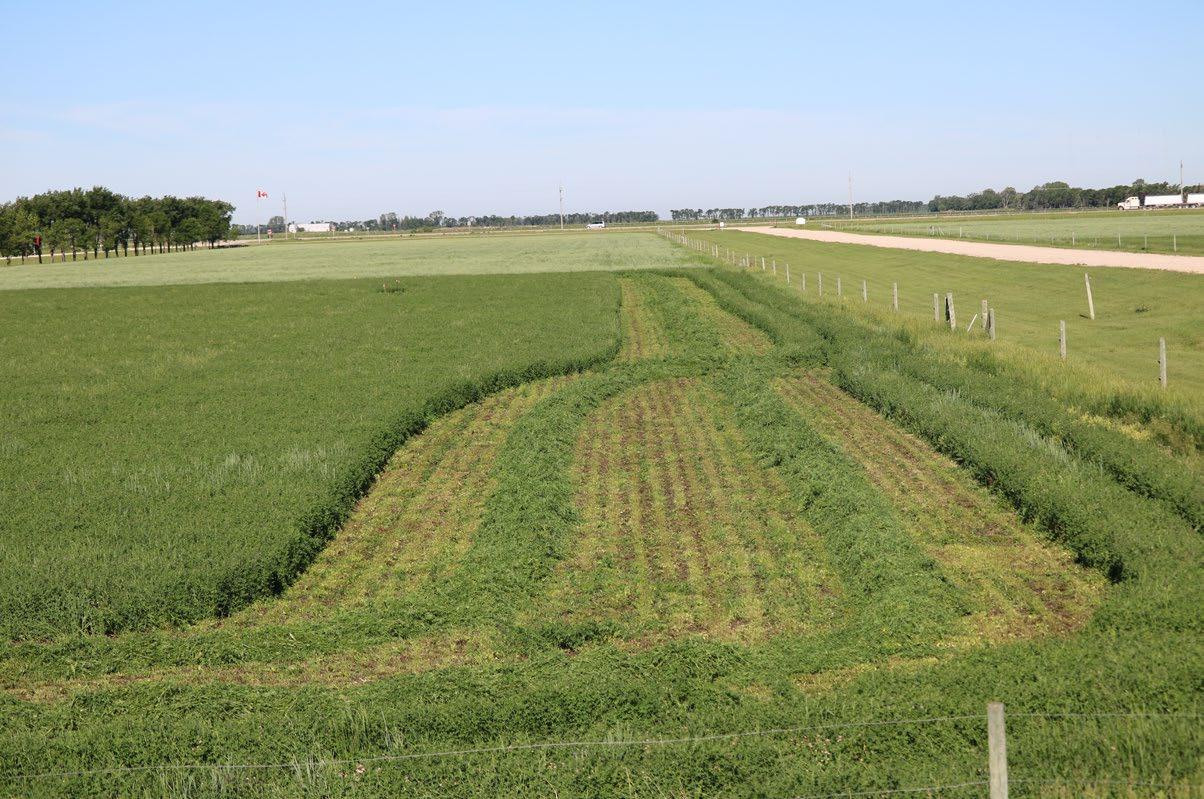
A dual-purpose forage can enhance sustainable crop/livestock intensification in a number of ways, including harvesting a cash food grain crop and con currently providing much-needed high quality feed for cattle in late fall/early winter, when the quality of the typically offered stockpiled forages is generally low. A single planting with multiple years of grain production offers several other benefits such as providing valuable habitat for wildlife, including nesting waterfowl and songbirds, greater water use efficiency, nutrient man agement, and soil protection.
What did we do?
As part of a larger project evaluating the yield and nutritive value of IWG regrowth post-grain harvest as grazed late fall/early winter feed for growing beef cattle, we also evaluated if IWG could be used as a hay crop in the event of summer drought/crop failure when pro
ducers may need to abandon grain harvest to provide additional cattle feed.
This large scale (45 ac) study was carried out at the University of Manitoba’s Glenlea Research Station, with the pastures established in 2020 and field measurements taken in 2021 when widespread drought conditions occurred throughout the province. The April 1-June 30 rainfall for the Glenlea site is 179 mm compared to 103 mm in 2021, of which 12 mm fell after all harvests were completed. The average daily temperatures in 2021 for June of 19.8℃ was about 2℃ above the long-term nor
tions, the pure stand of IWG yielded, on average, 2.92 tonnes of dry matter (DM)/ac, with 10% crude protein (CP) and 57% total digestible nutrients (TDN). The IWG/clover mix had a lower yield of 2.41 tonnes of DM/ ac, but higher feed quality at 12% CP and 59% TDN. Comparing the IWG to the grass:legume mix, the tall fescue/alfalfa/cicer milk vetch had the lowest yield overall at 1.52 tonnes of DM/ac, but had the highest feed quality at 19% CP and 63% TDN. IWG produced 20% and 90% greater yields than the alsike clover mixture and the potential hay crop, respectively.
mal. Three treatments were evaluated: 1) IWG in a pure stand with no fertilizer post establishment, representing a low input system; 2) IWG (50%) + alsike clover (50%). Alsike clover naturally fixes nitrogen and has good water tolerance relative to alfalfa but is less aggressive which is important for mixed stand establishment. These were compared to a more traditional hay mix of 50% grass (tall fescue): 50% legume (alfalfa + cicer milkvetch).
Pastures were managed for weeds in 2020, with the IWG and grass/legume mix with the IWG sampled just before flowering in 2021 and the grass/legume mix harvested at 20% alfalfa bloom on June 15 to determine their yields and feeding value. No rain was received between the timings of the forage mixture (five days earlier) and IWG harvests. No fertilizer was applied to any IWG plots prior to grain harvest 2021.
What did we find?
Our analysis showed that under drought condi
Additional to the evaluation of IWG as a hay poten tial hay crop, the researchers subsequently harvested the grain from the crop in early August. Although the grain was destined for food production, the research team evaluated the feed quality of the straw post grain harvest as an additional source of cattle feed. As expected, the feed quality of the straw was much low er than the hay, however it ranged from 5.3 – 7% CP, with TDN ranging from 50-52%, higher than may be seen with conventional annual crop straw. Although not a high-quality feed, this straw may be an important supplementary feed source in times of feed shortage.
Take home message
When faced with drought conditions, IWG offered a 90% greater yield than a traditional grass/legume mix. However, higher feed value was observed with the grass/ legume, thus consideration of the tradeoff between yield and quality for hay is essential. Nevertheless, this study showed that intermediate wheatgrass, alone or in combination with a legume, offers a potential avenue to supplement hay supplies in times of limited forage growth. Coupled with its ability to provide a cash crop and potential for late fall/early winter grazing for beef cattle, this dual purpose crop offers diverse options for cattle producers.
10 CATTLE COUNTRY November 2022 www.mbbeef.ca
Photo credit: University of Manitoba National Centre for Livestock and the Environment (NCLE)
At the University of Manitoba, researchers are evaluating intermediate wheatgrass (IWG) as a perennial grain crop with dual purpose potential (within a single season) not only for food but also for cattle feed.
Banking On Stockpiled Forage
BY: DR. MARY-JANE ORR, MBFI GENERAL MANAGER
A full-year grazing plan for managing the feed supply of the cow-calf herd at Manitoba Beef & Forage Initiatives (MBFI) integrates summer rotational grazing studies, stockpile of annual and perennial stands, and bale pod feeding in the field. In an average year, the transition from grazing projects in mid-October to ex tended grazing practices is dictated by the need to win terize surface and shallow buried summer water lines. Stretching grazing as long as weather conditions permit minimizes our feed costs and equipment demands of harvesting, transporting and feeding stored feed, and manure yardage. Given the challenge of unpredictable weather patterns, MBFI strongly recommends planning for a back up (or two) feeding strategies if livestock need to be moved in response to changing conditions.
MBFI targets 365 days of grazing, utilizing a variety of feed sources and grazing strategies. Planning based on previous year’s production and grazing records is essen tial in determining the acre allocation for management practices to target at different times of the year. Stockpiled or banked forage is recognized as one of the most cost-ef fective practices, where standing forage is accumulated in the growing season to be grazed after dormancy in late fall, winter, or the following early spring.
Planning for stockpiled grazing is started a year in advance taking into consideration the plant species in each forage stand and is responsive to seasonal growing conditions. Determining when to initiate the accumula tion of forage for stockpile is a balance of yield vs quality specific to the plant types in the stand. A minimum recommendation is to have 60 days of forage growth be fore the first killing frost, however it is not uncommon to have a full season’s growth left to reach maturity to recharge the seed bank in the field. Some plants retain nutritional quality better than others, but universally quality steadily declines through fall, winter, and into spring. It is critical to match the livestock class, expected performance, and their nutrition requirements to the stockpile being provided and have supplementation available if needed.
At MBFI we maximize the grazing season by (1) defer harvesting a second or third cut of alfalfa-grass hay for October-November grazing, (2) defer summer grazing of perennial pasture paddocks targeting use for either late fall or early next spring, (3) utilize an annual forage standing (or swathed) in the field, and (4) access wetland riparian areas in drier fall conditions.
For both legume (e.g., alfalfa) or grass dominated stands, waiting until after dormancy is important to mitigate grazing damage to overwintering energy
reserves. In the case of alfalfa to properly winterize, it is recommended to have a minimum of six weeks of uninterrupted growth before a killing frost allow for accumulation of energy reserves in the roots. For the cool season grasses common in Manitoba pastures and hay fields, early productivity in the next spring is predominantly due to the growth of vegetative tillers from mid-August to early October. Vegetative fall til lers, typically under four inches in height, have a lower tolerance to grazing and are more susceptible to winter kill leading to overall loss of stand productivity. Grazing ‘taller’ to leave more residue protects next year’s growth and planning for longer rest of fall grazed paddocks supports long term productivity.
Planning the number of grazing days for each field or paddock across the MBFI land base, and integrating fall grazing of annual forages, ensures we can provide our perennial stands with adequate rest going into dormancy to mitigate over-winter kill losses and improve plant vigor for early spring growth. For the 2022 growing season MBFI trialled the grazing application of teff, a warm-sea son annual grass. Teff can be harvested for multiple cuts of hay; however we were interested in seeing how stock piling teff for early fall grazing would work.
The teff grass was seeded in mid-June and yield samples were collected in advance of grazing in late September. Early growth was slow and not competitive against weed pressure. Following application of 2,4D Amine for broad leaf control, and more favorable growing conditions the teff yielded an average of 3100 dry matter lbs/acre. The dry matter feed quality in September tested at 8.4% crude protein (CP), 56% total digestible nutrients (TDN), and relative feed value (RFV) of 88. MBFI replacement heifers grazed the field, and were content with the available forage. However, we did observe higher residue of the less palatable mature stems. In comparison, stockpiled hay field alfalfa-grass sampled later in October at MBFI is typically yields and average of 1700 dry matter lbs/acre with CP of 12.7%, TDN of 55%, and RFV of 102.
For more information on how MBFI makes use of stockpile grazing or to start a conversation please email MBFI at information@mbfi.ca or call at 204-761-3300.


11CATTLE COUNTRY November 2022 www.mbbeef.ca
MBFI cows grazing stockpiled hay field alfalfa-grass mix in November 2021. (Photo credit: MBFI)
LOCK-IN YOUR PROFITABILITY PURCHASE YOUR LIVESTOCK PRICE INSURANCE POLICY TODAY The time is now to purchase your Livestock Price Insurance policy and secure market pricing for your cattle. Policy purchases are available Tuesday – Thursday from 3 p.m. to 12 a.m. CST. Policy settlements are available Mondays from 3 p.m. to 12 a.m. CST. Visit LPI.ca for more information or call 1-844-782-5747 to purchase your policy. MASC Livestock Price Insurance (LPI) FALL ad Size: 9.63”wide x 7.75”deep Half page Issue date: November 2022
Tailgatin’ Good
BY: ANNA BORYS, MBP FOOD EXPERT
Fall is officially here and one of the main events of the season will soon be upon us: Grey Cup Sunday. Although chicken wings, mozzarella sticks or nachos might be your favourite staples for hootin’ and hollerin’ in front of TSN all day, perhaps adding a new compet itor to the lineup will really amp things up. The Philly Cheesesteak is not only a classic but so easy to throw to gether using only a few simple ingredients. And true to myself, I’ve gone and made it appetizer size. This makes a tasty way to serve ribeye to your football-watching pals without breaking the bank. An appetizer using a premi um cut of steak for under $20.00. Sounds good to me!
There are many variations on this infamous sandwich. It comes down to four main ingredients: steak, veggies, cheese, and bread. Some will say steak with provolone using only caramelized onions is most authentic when others prefer grilled peppers with their onions then smothered in Cheez Whiz. I’m a firm be liever in if it’s something you find delicious, that will be the best version. I took a few liberties myself by adding the slightest bit of pan gravy in with the meat mixture (to prevent drying out), serving on slices of French baguette as opposed to Italian sub rolls, then garnishing with sliced pepperoncini. The biggest key to making this sandwich successful is slicing the steak as thin as possi ble before grilling. I would even recommend throwing it in the freezer for 20-30 minutes to help firm the meat before slicing. Instead of using a large Italian sub roll, I like to top slices of French baguette before throwing in the oven. The topping will protect the bread from burn ing and will keep it still soft and chewy like a sandwich (this is not supposed to be crostini!).
Whether the Blue Bombers are going to Regina on November 20th or not, this is a fun and super easy recipe to serve for any holiday party coming up. And here’s a hot tip…these are even better reheated the next day. Just set your oven to 350 and bake until heated through and the cheese on top gets all gooey and bubbly all over again.
Let’s go Blue!
Watch Great Tastes of Manitoba
Saturday,
3 (CTV Winnipeg, 6:30pm) for more
recipes from Anna Borys and Manitoba Beef Producers.
• GRASSFED: “True North Foods is partnered with A&W Canada to supply Canadian grassfed beef for A&W’s grassfed burger program.



• SERVICES: Whether you are a specialty producer looking to get your product to a speci c market or distributor, or if you are producing commodity livestock for sale, we can partner with you. From our multi-species capabilities to our ability to handle smaller volumes, we o er excellent capabilities for producers in the Canadian Prairies to maximize their pro tability.


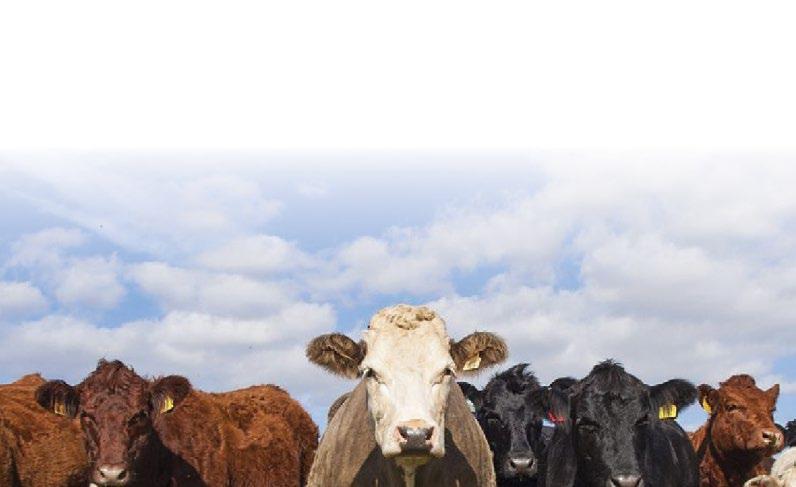
• FACILITY: We have a state-of-the-art facility to allow us to reach markets across Canada, the USA, and beyond. We understand producer’s needs, their care for their animals, and their honest, straightforward nature. Call us to hear how we can work together to get your product to market.
Cheesesteak Bites
4. Add julienned onions to the pan and turn heat to medium low. Cook onions until they start to caramelize. Season as necessary.
5. Add flour and extra tablespoon of canola to pan and cook for another 2-3 minutes. Slowly add water while stirring to create a creamy mixture. Return steak back to pan and stir to combine. Season as necessary. Once mixture is thickened, remove from heat.
FLANK STEAK
Slice the steak in extremely thin slices, against the grain. For easier slicing, put the steak in the freezer for 20-30 minutes before slicing.
Heat a large cast iron or non-stick skillet over high heat. Add canola oil.
Once oil is hot, carefully add sliced steak to hot pan and sear until edges are browning and steak is just cooked through. Season with salt and pepper. Remove steak from skillet.
6. Turn broiler on. Line a baking sheet with parch ment. Portion heaping spoonfuls of the steak mixture onto the sliced baguette and lay one half of sliced provolone on top. Repeat until all the mixture is used up.
7. Place under the broiler until the cheese has been melted and lightly bubbling, about 3-4 minutes. Watch carefully as to not burn.
8. Remove from oven and garnish with sliced hot pickled peppers.

NOTES
• These can be prepared the day before and heated through in a 350°F/180°C oven.

12 CATTLE COUNTRY November 2022 www.mbbeef.ca
on
December
delicious
Philly
Appetizer yields: approx. 16-20 portions • 1 tbsp canola oil • 12-16 oz. ribeye or striploin steak • 1 onion, julienne • 1½ tsp Kosher Salt • ½ tsp Black Pepper • 2 tbsp all purpose flour • 1/3 cup water • 1 french baguette, 1 cm slices • 1 package provolone, slices, halved • ½ cup pepperonini, sliced (or banana peppers)
1.
2.
3.
(Photo credit: Anna Borys)
www.truenorthfoods.ca | duane@truenorthfoods.ca | 204-791-5010





























 (October 7, 2022 Province of Manitoba News Release)
(October 7, 2022 Province of Manitoba News Release)

























